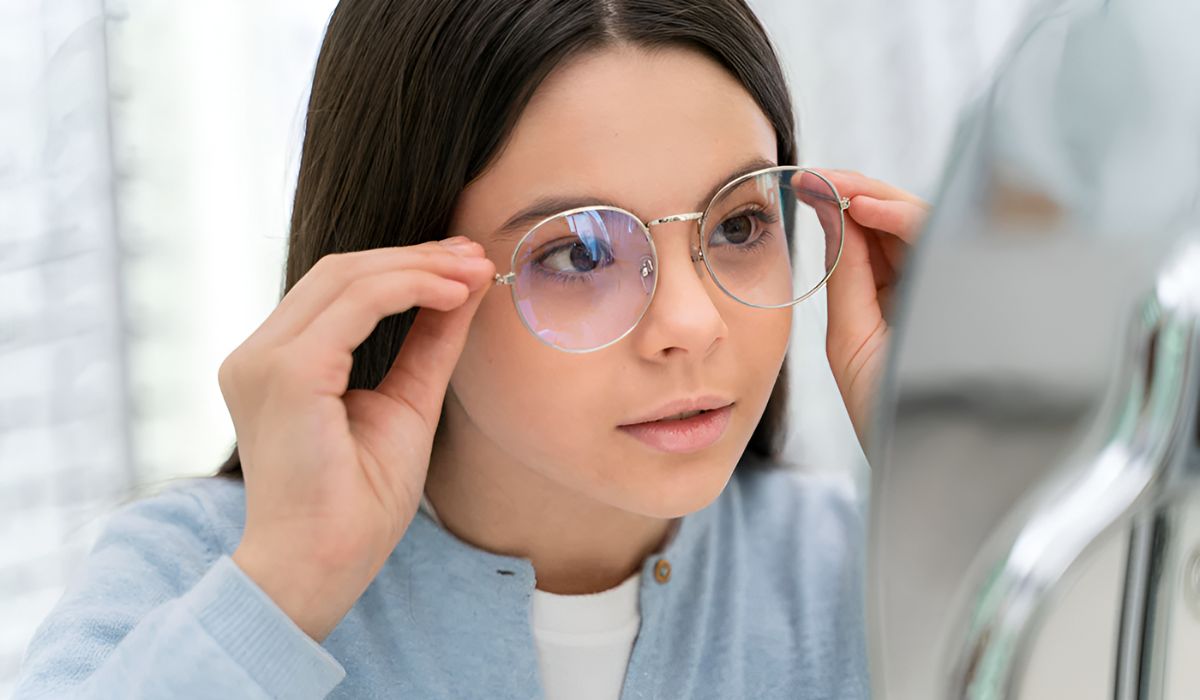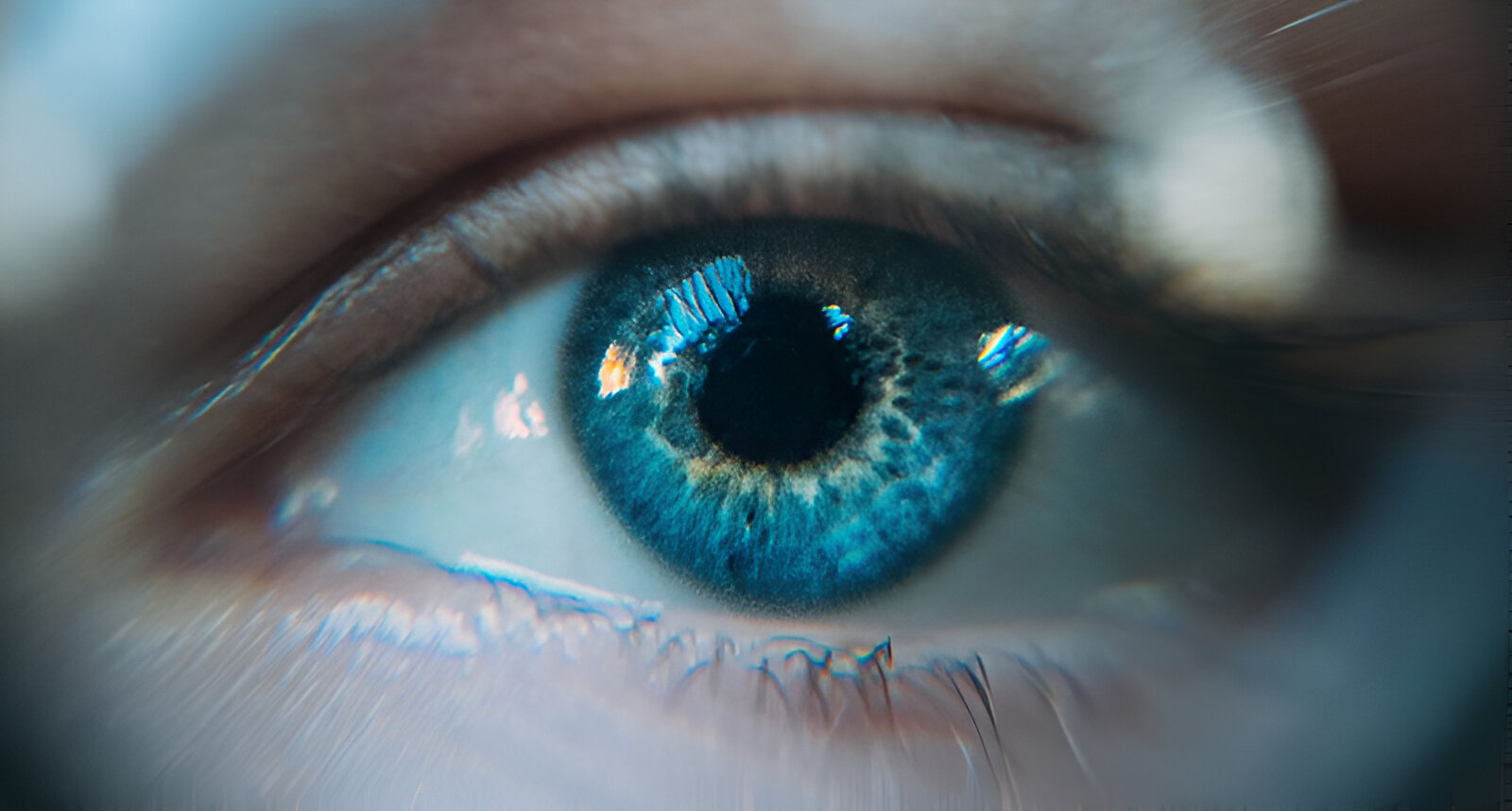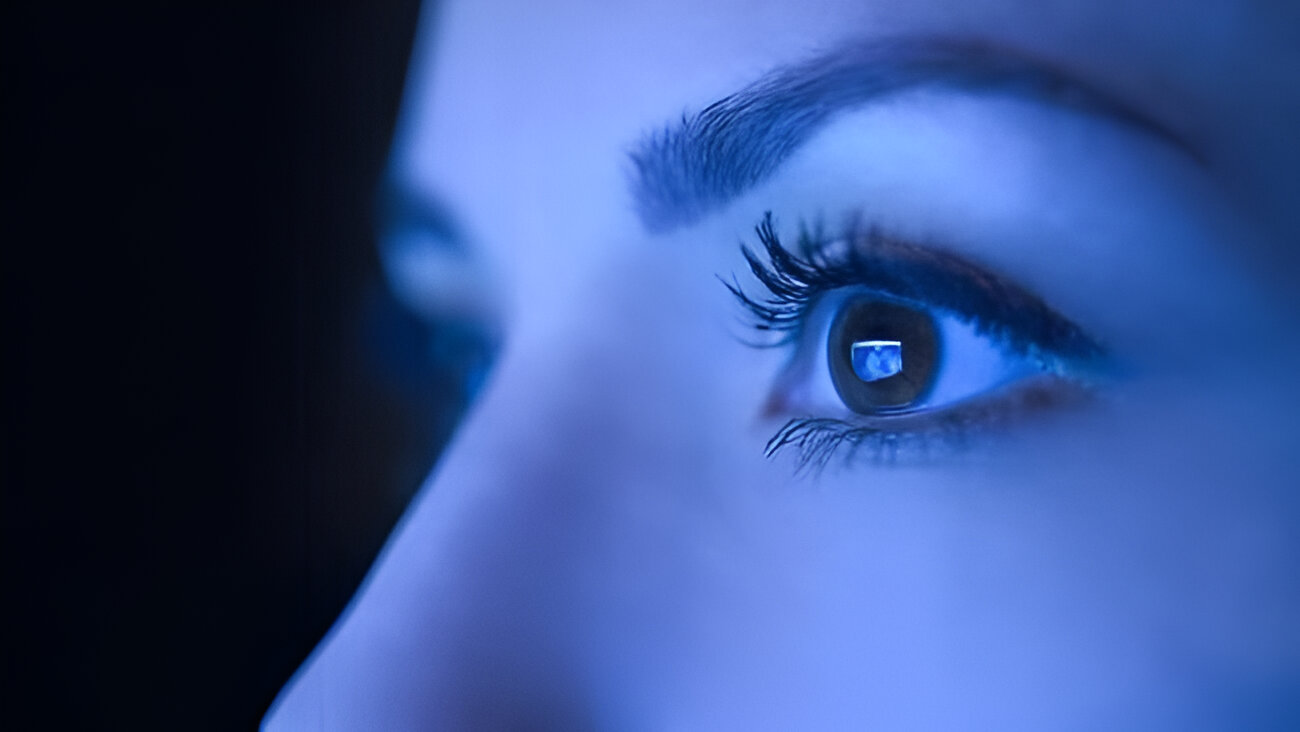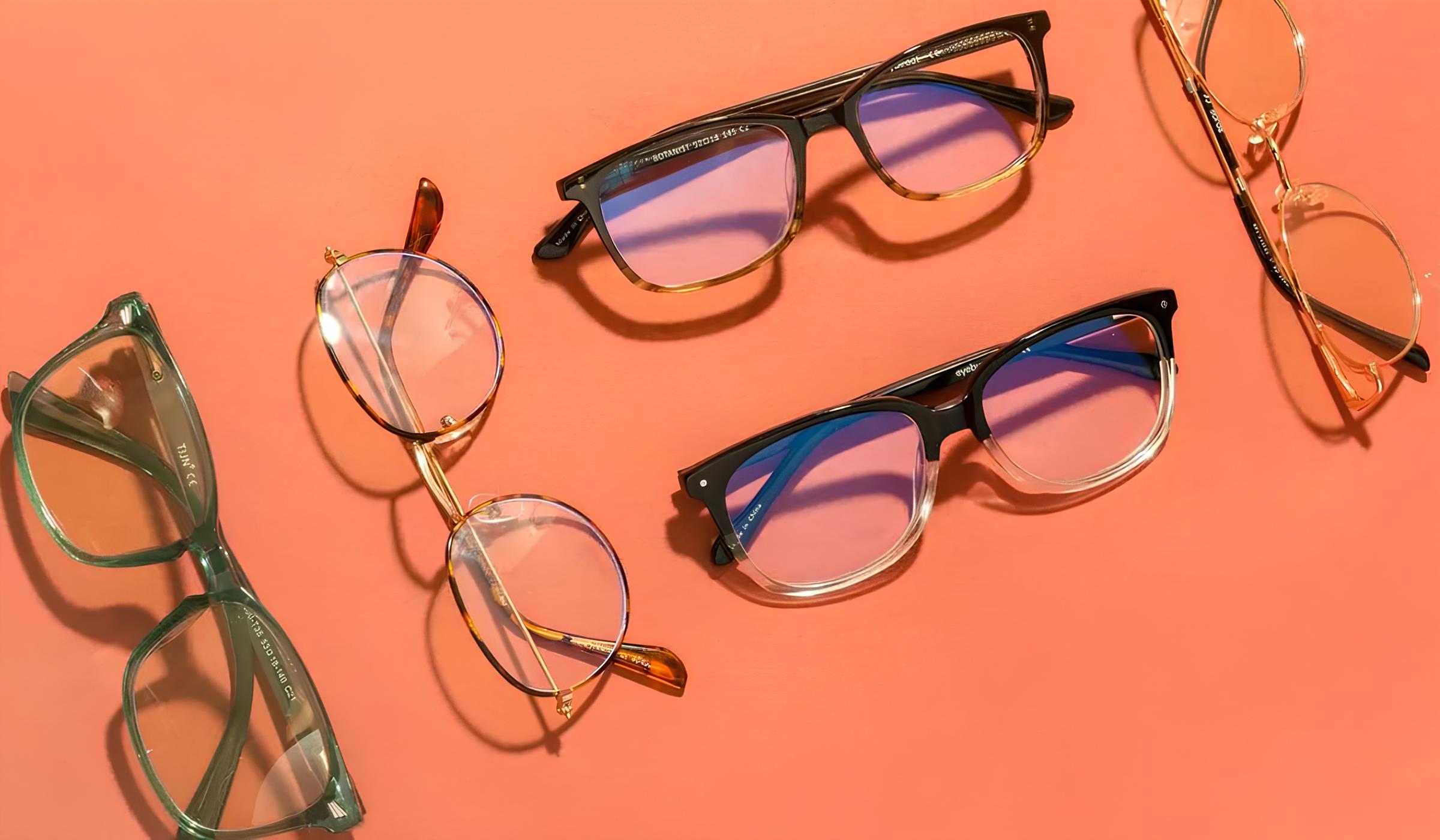Introduction
In today's digital age, the increasing reliance on electronic devices has led to a surge in concerns about the potential health effects of prolonged screen exposure. Many individuals have turned to blue light glasses as a solution to alleviate eye strain and reduce the impact of blue light emitted by screens. While these glasses have gained popularity for their purported benefits, some wearers have reported experiencing headaches, raising questions about the effectiveness and comfort of these specialized eyewear.
The emergence of blue light glasses reflects a growing awareness of the potential harm caused by excessive screen time. Blue light, a high-energy visible (HEV) light, is emitted by digital screens and has been associated with disrupted sleep patterns and digital eye strain. Blue light glasses are designed to filter out a portion of this blue light, aiming to reduce eye fatigue and improve visual comfort during prolonged screen use.
However, despite their intended benefits, some individuals have encountered unexpected discomfort in the form of headaches while wearing blue light glasses. This phenomenon has sparked a need for a deeper understanding of the underlying causes and potential remedies for these adverse effects. As such, it is crucial to explore the factors contributing to headaches from blue light glasses and provide actionable insights for addressing and preventing this discomfort.
By delving into the complexities of this issue, we can equip blue light glasses wearers with the knowledge and strategies needed to optimize their visual comfort and overall well-being. Through a comprehensive exploration of the causes and solutions related to headaches from blue light glasses, we aim to empower individuals to make informed decisions and effectively manage any discomfort associated with these specialized eyewear.
Understanding the Causes of Headaches from Blue Light Glasses
The experience of headaches while wearing blue light glasses can be perplexing, especially for individuals who sought these glasses as a remedy for digital eye strain. To comprehend the potential causes of these headaches, it is essential to consider the intricate interplay between the glasses, the wearer's visual habits, and the impact of blue light on the eyes.
One possible contributing factor to headaches from blue light glasses is the lens tint. Some blue light glasses are equipped with a yellow or amber tint designed to filter out blue light. However, the specific hue and intensity of this tint may not be suitable for every individual. The tint's color and density can affect how the eyes perceive light, potentially leading to visual discomfort and headaches for some wearers.
Moreover, the quality of the blue light glasses and the accuracy of the lens tinting process can significantly influence the wearer's comfort. Substandard glasses or imprecise tinting may distort color perception or cause visual aberrations, triggering headaches as the eyes strain to adapt to the altered visual stimuli.
Additionally, the fit of the glasses plays a crucial role in their potential to induce headaches. Ill-fitting frames or improperly adjusted nose pads can exert pressure on the wearer's temples and nasal bridge, leading to tension headaches. Furthermore, prolonged use of blue light glasses with an unsuitable fit may result in muscle strain around the eyes and forehead, contributing to discomfort and headaches.
Another vital aspect to consider is the wearer's existing visual health and habits. Individuals with underlying vision issues, such as uncorrected refractive errors or presbyopia, may experience headaches when using blue light glasses that do not address their specific visual needs. Furthermore, excessive screen time, poor posture, and inadequate lighting conditions can compound the impact of blue light exposure, potentially exacerbating headaches while wearing blue light glasses.
Furthermore, the transition to blue light glasses may initially cause discomfort as the eyes adapt to the altered visual environment. This adjustment period, during which the eyes acclimate to the filtered light spectrum, can manifest as temporary headaches for some wearers.
In essence, the causes of headaches from blue light glasses are multifaceted, encompassing factors related to the glasses themselves, the wearer's visual characteristics, and the process of transitioning to blue light protection. By recognizing these potential causes, individuals can proactively address the underlying issues and seek tailored solutions to mitigate headaches while benefiting from the protective features of blue light glasses.
Choosing the Right Blue Light Glasses for You
Selecting the most suitable blue light glasses is a pivotal step in mitigating discomfort and maximizing the potential benefits of these specialized eyewear. With a myriad of options available, individuals can navigate the selection process by considering several key factors to ensure that their chosen glasses align with their unique visual needs and preferences.
Understanding Lens Tint Variations
The lens tint of blue light glasses plays a crucial role in filtering out blue light and influencing the visual experience. Different tint variations, such as yellow, amber, or clear with a specialized coating, offer varying degrees of blue light filtration. It is essential for individuals to assess their visual comfort with different tint hues and intensities, as the lens color can impact color perception and overall visual clarity. By understanding the implications of various lens tints, wearers can make informed decisions when selecting blue light glasses that best complement their visual preferences.
Evaluating Lens Quality and Accuracy
Prioritizing the quality and precision of the lens tinting process is paramount in ensuring the effectiveness and comfort of blue light glasses. Opting for glasses from reputable manufacturers or certified optical providers can enhance the likelihood of accurate and consistent lens tinting. Additionally, verifying the optical quality of the lenses, such as their clarity and absence of optical distortions, can contribute to a more comfortable and visually pleasing experience. By scrutinizing the quality and accuracy of the lenses, individuals can minimize the risk of potential visual discomfort and headaches associated with subpar blue light glasses.
Considering Frame Fit and Comfort
The fit and comfort of the frames are pivotal considerations when choosing blue light glasses. Individuals should prioritize frames that provide a secure yet comfortable fit, with particular attention to the distribution of pressure points and the adjustability of nose pads. Opting for lightweight and ergonomically designed frames can alleviate potential tension headaches and minimize the risk of prolonged discomfort during extended wear. By prioritizing frame fit and comfort, wearers can optimize their overall experience with blue light glasses and reduce the likelihood of headaches stemming from ill-fitting frames.
Seeking Professional Guidance
Seeking professional guidance from optometrists or optical specialists can provide valuable insights into selecting the most suitable blue light glasses. These experts can assess the individual's visual requirements, recommend specific lens tints based on their unique needs, and offer guidance on frame styles that align with their facial structure and comfort preferences. By leveraging professional expertise, individuals can make informed decisions when choosing blue light glasses tailored to their specific visual characteristics, potentially minimizing the risk of discomfort and headaches associated with ill-suited eyewear.
In essence, choosing the right blue light glasses involves a thoughtful evaluation of lens tint variations, lens quality, frame fit, and professional guidance. By considering these factors, individuals can navigate the selection process with confidence, ultimately enhancing their visual comfort and well-being while minimizing the potential for headaches and discomfort associated with blue light glasses.
Adjusting Your Blue Light Glasses
Ensuring the optimal fit and alignment of blue light glasses is instrumental in mitigating discomfort and maximizing their effectiveness in filtering out blue light. By implementing simple yet effective adjustments, wearers can tailor their glasses to enhance comfort and alleviate potential sources of headaches.
Frame Alignment
Proper frame alignment is a fundamental aspect of optimizing the comfort and functionality of blue light glasses. Individuals should verify that the frames sit evenly on their face, with the temples extending straight back and the lenses positioned at the appropriate height. Uneven frame alignment can exert uneven pressure on the temples, potentially leading to tension headaches. By adjusting the temple arms to achieve symmetrical alignment and a balanced fit, wearers can minimize the risk of discomfort associated with misaligned frames.
Nose Pad Positioning
The positioning of the nose pads significantly influences the stability and comfort of blue light glasses. Wearers should ensure that the nose pads rest securely on the bridge of the nose without exerting excessive pressure. Adjusting the nose pads to achieve a snug yet gentle fit can prevent the glasses from slipping or causing discomfort, thereby reducing the likelihood of tension headaches stemming from ill-fitting nose pads.
Temple Arm Tension
Optimal temple arm tension is essential for maintaining a secure yet comfortable fit. Individuals can adjust the tension of the temple arms to align with their preferences, ensuring that the glasses remain securely in place without exerting excessive pressure on the temples. By fine-tuning the temple arm tension, wearers can customize the fit of their blue light glasses to minimize discomfort and potential headaches associated with prolonged wear.
Lens Positioning
Verifying the positioning of the lenses within the frame is crucial for optimizing visual clarity and comfort. Individuals should ensure that the lenses are securely seated within the frame, free from any misalignments or asymmetries that could induce visual strain and potential headaches. By confirming the proper positioning of the lenses, wearers can enhance their overall visual experience and reduce the risk of discomfort associated with suboptimal lens alignment.
In essence, by implementing these adjustments, wearers can fine-tune their blue light glasses to achieve an optimal fit that minimizes potential sources of discomfort and headaches. This proactive approach to adjusting blue light glasses can significantly enhance the wearers' visual comfort and well-being, reinforcing the glasses' potential to alleviate digital eye strain while mitigating the risk of associated discomfort.
Taking Breaks and Practicing Eye Exercises
In addition to optimizing the fit and functionality of blue light glasses, incorporating regular breaks and practicing targeted eye exercises can play a pivotal role in alleviating discomfort and reducing the likelihood of headaches associated with prolonged screen use. These proactive measures aim to mitigate the strain imposed on the eyes and promote visual relaxation, ultimately contributing to enhanced comfort and well-being.
Implementing Screen Breaks
Integrating periodic screen breaks into daily routines is essential for minimizing the cumulative impact of prolonged screen exposure. The 20-20-20 rule serves as a practical guideline, encouraging individuals to take a 20-second break every 20 minutes and shift their gaze to an object at least 20 feet away. This practice helps alleviate eye strain and prevent visual fatigue by allowing the eyes to refocus and relax, reducing the potential for headaches associated with sustained screen engagement.
Engaging in Eye Exercises
Incorporating simple yet effective eye exercises into daily habits can promote ocular flexibility and alleviate tension, contributing to improved visual comfort. Eye exercises, such as eye rolls, focus shifts, and palming, can help reduce the strain induced by prolonged screen use and mitigate the risk of headaches. These exercises facilitate the relaxation of ocular muscles and promote optimal circulation, fostering a more comfortable visual experience while wearing blue light glasses.
Practicing the 20-20-20 Rule
Adhering to the 20-20-20 rule, individuals can proactively mitigate the strain imposed on their eyes during prolonged screen use. By integrating regular breaks and eye exercises into their daily routine, wearers can promote visual relaxation, alleviate tension, and reduce the likelihood of headaches associated with extended screen exposure. These proactive measures complement the protective benefits of blue light glasses, fostering a holistic approach to visual well-being and comfort.
In essence, by incorporating screen breaks and practicing targeted eye exercises, individuals can effectively manage the impact of prolonged screen use and enhance their visual comfort. These proactive measures, when combined with the protective features of blue light glasses, contribute to a comprehensive strategy for mitigating discomfort and promoting optimal visual well-being.
Seeking Professional Help if Necessary
In some instances, persistent headaches or discomfort while wearing blue light glasses may warrant seeking professional assistance to address underlying visual issues. Optometrists and ophthalmologists are equipped with the expertise to evaluate the wearer's visual health, assess the compatibility of blue light glasses with their specific needs, and provide tailored recommendations to alleviate discomfort.
Professional eye care providers can conduct comprehensive eye examinations to identify any underlying refractive errors, astigmatism, or other vision-related issues that may contribute to headaches while using blue light glasses. By thoroughly evaluating the wearer's visual acuity, focusing ability, and ocular health, these professionals can offer valuable insights into the potential sources of discomfort and recommend appropriate interventions.
Furthermore, individuals experiencing persistent headaches with blue light glasses may benefit from specialized assessments to determine the most suitable lens prescriptions or lens coatings that align with their visual requirements. Optometrists can prescribe customized blue light glasses with precise lens specifications tailored to address specific visual challenges, potentially alleviating discomfort and enhancing the overall effectiveness of the glasses in filtering out blue light.
Additionally, professional guidance can help individuals identify ergonomic considerations, such as optimal screen positioning, ambient lighting adjustments, and posture recommendations, to complement the use of blue light glasses. By addressing environmental and ergonomic factors, eye care specialists can contribute to a more holistic approach to minimizing headaches and enhancing visual comfort during screen use.
Seeking professional help is particularly crucial for individuals with preexisting visual conditions, such as presbyopia or asthenopia, as these conditions may interact with the use of blue light glasses and contribute to discomfort. Optometrists can offer targeted solutions, including multifocal lenses or specialized coatings, to address the unique visual needs of individuals with such conditions, potentially mitigating the occurrence of headaches while wearing blue light glasses.
In essence, seeking professional assistance from eye care specialists can provide valuable insights and tailored solutions to address persistent headaches or discomfort associated with blue light glasses. By leveraging the expertise of optometrists and ophthalmologists, individuals can optimize their visual comfort, enhance the effectiveness of blue light glasses, and proactively manage any challenges related to prolonged screen use.
Conclusion
In conclusion, the prevalence of headaches while wearing blue light glasses underscores the complexity of addressing visual discomfort in the digital era. The multifaceted nature of this issue necessitates a comprehensive approach that encompasses the selection of suitable glasses, proactive adjustments, and the integration of practical measures to promote visual well-being.
Understanding the potential causes of headaches from blue light glasses is instrumental in empowering individuals to make informed decisions and address underlying factors contributing to discomfort. Factors such as lens tint variations, lens quality, frame fit, and the wearer's visual health and habits play pivotal roles in the overall comfort and effectiveness of blue light glasses. By recognizing these influences, individuals can proactively navigate the selection process and tailor their choices to align with their unique visual needs and preferences.
Moreover, adjusting blue light glasses to achieve an optimal fit and alignment can significantly mitigate potential sources of discomfort and headaches. By fine-tuning frame alignment, nose pad positioning, temple arm tension, and lens positioning, wearers can customize their glasses to enhance comfort and reduce the strain imposed on the eyes during prolonged screen use.
In addition to optimizing the fit of blue light glasses, incorporating regular screen breaks, and practicing targeted eye exercises are essential components of a holistic approach to visual comfort. Adhering to the 20-20-20 rule and engaging in simple eye exercises can promote ocular relaxation, alleviate tension, and reduce the likelihood of headaches associated with extended screen exposure. These proactive measures complement the protective benefits of blue light glasses, fostering a comprehensive strategy for managing visual discomfort.
Furthermore, seeking professional help from optometrists or ophthalmologists can provide valuable insights and tailored solutions for individuals experiencing persistent headaches or discomfort while wearing blue light glasses. Professional assessments, customized prescriptions, and ergonomic recommendations can address underlying visual issues and enhance the overall effectiveness of blue light glasses in mitigating digital eye strain.
In essence, addressing headaches from blue light glasses requires a nuanced understanding of the interplay between the glasses, the wearer's visual characteristics, and the impact of prolonged screen use. By embracing a multifaceted approach that encompasses informed decision-making, proactive adjustments, and professional guidance, individuals can optimize their visual comfort and well-being, ultimately maximizing the potential benefits of blue light glasses while minimizing the risk of discomfort and headaches.

























